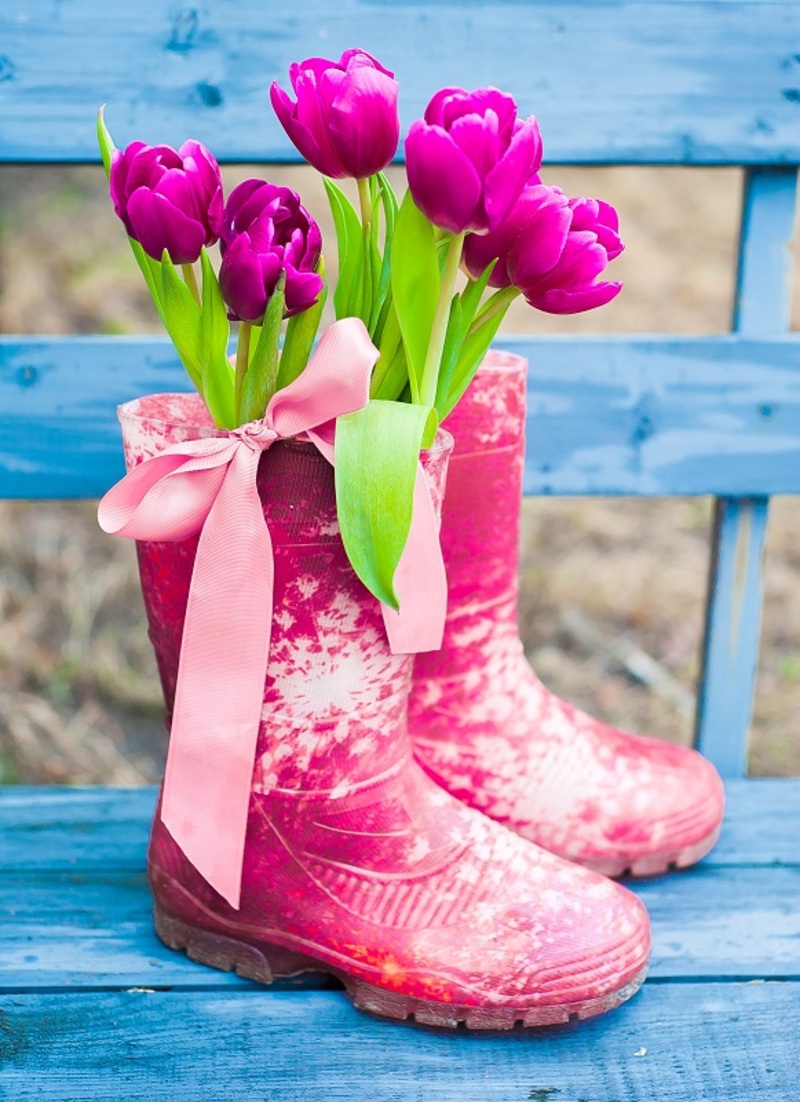Unveiling the Mystery: Your Birth Flower and Its Meaning
Posted on 17/08/2025
Unveiling the Mystery: Your Birth Flower and Its Meaning
Just as birthstones hold special associations, every month of the year boasts its own unique birth flower, each rich in symbolism and steeped in tradition. Are you curious about the flower that represents your birth month? This comprehensive, SEO-optimized guide will walk you through every birth flower, exploring its history, secret meanings, and how it can add an extra touch of magic to your life. Discover your birth flower and unlock the hidden messages it has for you!

What Are Birth Flowers?
Birth flowers, like gemstones, are botanical symbols assigned to every month of the year. Their origins can be traced back to ancient civilizations where flowers were used for expressing emotions, celebrating milestones, and conveying hidden messages. Assigning floral emblems to birth months became more popular in the Victorian era, when floriography--the language of flowers--soared in popularity.
- Unique to Each Month: Every month has at least one, sometimes two, designated birth flowers.
- Symbolic Meanings: Each flower holds its own meaning, reflecting the qualities or personal characteristics of those born in that month.
- Cultural Significance: Birth flowers are used in gifts, ceremonies, and even as inspiration for baby names and jewelry.
Read on to discover the birth flower for each month and unravel the meaning of your birth flower!
Monthly Guide: The Birth Flowers and Their Symbolic Meanings
January Birth Flower: Carnation & Snowdrop
- Carnation: Revered for its ruffled petals and vibrant hues, the carnation represents love, fascination, and distinction. The bloom is also associated with admiration and gratitude.
- Snowdrop: Snowdrops are delicate white flowers symbolizing hope and rebirth, especially meaningful for a month that heralds new beginnings.
Those born in January are believed to possess resilience and warmth, mirroring the hardy yet gentle beauty of these flowers.
February Birth Flower: Violet & Primrose
- Violet: With its enchanting fragrance and rich purple hues, the violet stands for modesty, faithfulness, and wisdom.
- Primrose: Associated with youth and young love, the primrose signals early spring and the awakening of nature's beauty.
February's blooms are perfect for those who are gentle, loyal, and full of quiet strength.
March Birth Flower: Daffodil & Jonquil
- Daffodil: Symbolizing new beginnings, rebirth, and prosperity, the daffodil's golden trumpet heralds the arrival of spring.
- Jonquil: A close relative of the daffodil, jonquils represent affection and desire.
March-born individuals often embody energy, optimism, and a zest for life.
April Birth Flower: Daisy & Sweet Pea
- Daisy: The simple beauty of the daisy conveys innocence, purity, and loyal love.
- Sweet Pea: This fragrant blossom represents blissful pleasure and goodbyes, making it a flower of well wishes.
Those with April birthdays are often optimistic, friendly, and cherished by many.
May Birth Flower: Lily of the Valley & Hawthorn
- Lily of the Valley: These bell-shaped blooms stand for sweetness, humility, and a return to happiness.
- Hawthorn: Obstinately blooming in late spring, hawthorn signifies hope and supreme happiness.
May's flowers suggest a pure heart and a joyful spirit.
June Birth Flower: Rose & Honeysuckle
- Rose: Perhaps the most iconic of all blooms, roses embody love, passion, and appreciation. Each color holds its own nuance of these meanings.
- Honeysuckle: This cheerful vine features sweet fragrance and represents bonds of love.
June-born individuals are believed to be loving, passionate, and cherished friends.
July Birth Flower: Larkspur & Water Lily
- Larkspur: Available in vibrant shades, larkspur signifies lightness, positivity, and an open heart.
- Water Lily: Floating beauties that symbolize purity and enlightenment.
Those born in July are optimistic, sincere, and often spread joy to those around them.
August Birth Flower: Gladiolus & Poppy
- Gladiolus: Named after the Latin word for sword, gladiolus reflects strength of character, remembrance, and integrity.
- Poppy: The poppy is associated with imagination, restful sleep, and remembrance, especially the red poppy.
August individuals are typically strong, passionate, and resilient.
September Birth Flower: Aster & Morning Glory
- Aster: This star-shaped flower is a symbol of love, wisdom, and faith.
- Morning Glory: Famed for its beauty in the early hours, morning glory stands for affection and mortality.
People born in September carry wisdom, grace, and an affectionate nature.
October Birth Flower: Marigold & Cosmos
- Marigold: Vibrant and bold, marigolds represent creativity, passion, and warmth.
- Cosmos: These delicate flowers stand for order, harmony, and balance.
October birthdays are commonly connected to vibrant creativity and nurturing hearts.
November Birth Flower: Chrysanthemum
- Chrysanthemum: This wildly popular flower conveys loyalty, joy, and longevity. In various cultures, it also represents honor and optimism.
November-born individuals are loyal friends and often serve as pillars of strength and joy in their communities.
December Birth Flower: Narcissus & Holly
- Narcissus: This winter bloom--frequently associated with paperwhites--signifies hope, wealth, and self-love.
- Holly: Traditional in holiday decor, holly symbolizes protection and domestic happiness.
Those with December birthdays are hopeful, generous, and bring light to others during the winter months.
The Hidden Language and Traditions of Birth Flowers
Throughout history, flowers have worked as a non-verbal means to express feelings and secret sentiments. Here are fascinating traditions and applications connected to the meaning of your birth flower:
- Gift-giving: Birth flowers serve as thoughtful, personal gifts for birthdays, anniversaries, and special occasions.
- Victorian Floriography: In the Victorian era, individuals exchanged bouquets laced with hidden meanings based on flower type and color.
- Personal Jewelry: Wearing jewelry inspired by your birth flower is believed to bring luck and emphasize personality traits.
- Decor and Art: People incorporate their birth flowers into home decor, wedding bouquets, and baby names for meaningful symbolism.
Learning about your birth month flower can help you better understand yourself and celebrate your journey through life's seasons.
How to Use Your Birth Flower in Everyday Life
Incorporating your birth flower and its meaning into your life can be both joyful and inspirational. Here are some creative ideas:
- Home Decor: Arrange a bouquet featuring your birth month flower to infuse your space with positive energy and symbolism.
- Daily Mindfulness: Meditate on your birth flower's meaning to cultivate the qualities it represents--such as hope, loyalty, or love.
- Gift Giving: Give friends and loved ones a bouquet featuring their birth flowers for a personal and thoughtful touch.
- Gardening: Plant your birth flower in your garden, or in containers on your balcony or patio.
- Jewelry Selection: Choose accessories or charms featuring your birth bloom for a unique statement.
- Special Celebrations: Incorporate your birth flower in birthday cakes, invitations, or as a theme for meaningful events.
Choosing the Right Flower Arrangement
When creating or commissioning a bouquet, you can use this guide to birth month flowers to design an arrangement that is beautiful and full of meaning. Mix and match complementary blooms, or choose the traditional birth flower as the centerpiece for a truly symbolic gift. Remember, flower color and arrangement style can further tailor your message!
Deciphering Multiple Birth Flowers
Some months enjoy more than one associated birth flower. For instance, June's rose and honeysuckle or December's narcissus and holly each bring their own special message. This gives you the flexibility to choose the meaning or aesthetic you most identify with, making your personal connection to your birth month flower even more special.
- Tip: Consider using both flowers together for a richer, more layered bouquet or as a theme for cards and gifts.

Birth Flower FAQs
1. How is my birth flower chosen?
Your birth flower is based on the month you were born. These assignments stem from ancient customs, and while variations exist across cultures, the standard list presented here is widely accepted.
2. Can I have more than one birth flower?
Yes! Several months have two designated birth flowers. You are free to celebrate either or both.
3. Is it unlucky to use someone else's birth flower?
Absolutely not. Many people incorporate other birth month flowers into bouquets or decor based on meaning, aesthetics, or personal preference. Including a variety of symbolic flowers can add richness and depth to floral arrangements.
4. Can I gift birth flower jewelry?
Yes! Birth flower-inspired jewelry is an increasingly popular gift idea, adding a personalized, meaningful touch to necklaces, rings, and bracelets. It's a beautiful way to keep your own birth flower or a loved one's close to the heart.
Conclusion: Let Your Birth Flower Inspire You
Understanding your birth flower and its meaning allows you to embrace the unique symbolism that nature has assigned to your birth month. Whether you choose to incorporate your birth month flower into special celebrations, gifts, jewelry, or personal reflection, you're partaking in a rich, uplifting tradition that spans centuries and cultures.
Which birth flower represents your month? Let its meaning inspire, empower, and guide you throughout your life's journey.
Explore your birth flower's symbolism and let nature's language add beauty and mystery to your story. Share your favorite birth flower and how its meaning resonates with you!
Latest Posts
Unveiling the Mystery: Your Birth Flower and Its Meaning
Mastering the Art of Hydrangea Maintenance
Learn How to Keep Your Flowers Fresh: 3 Easy Methods





